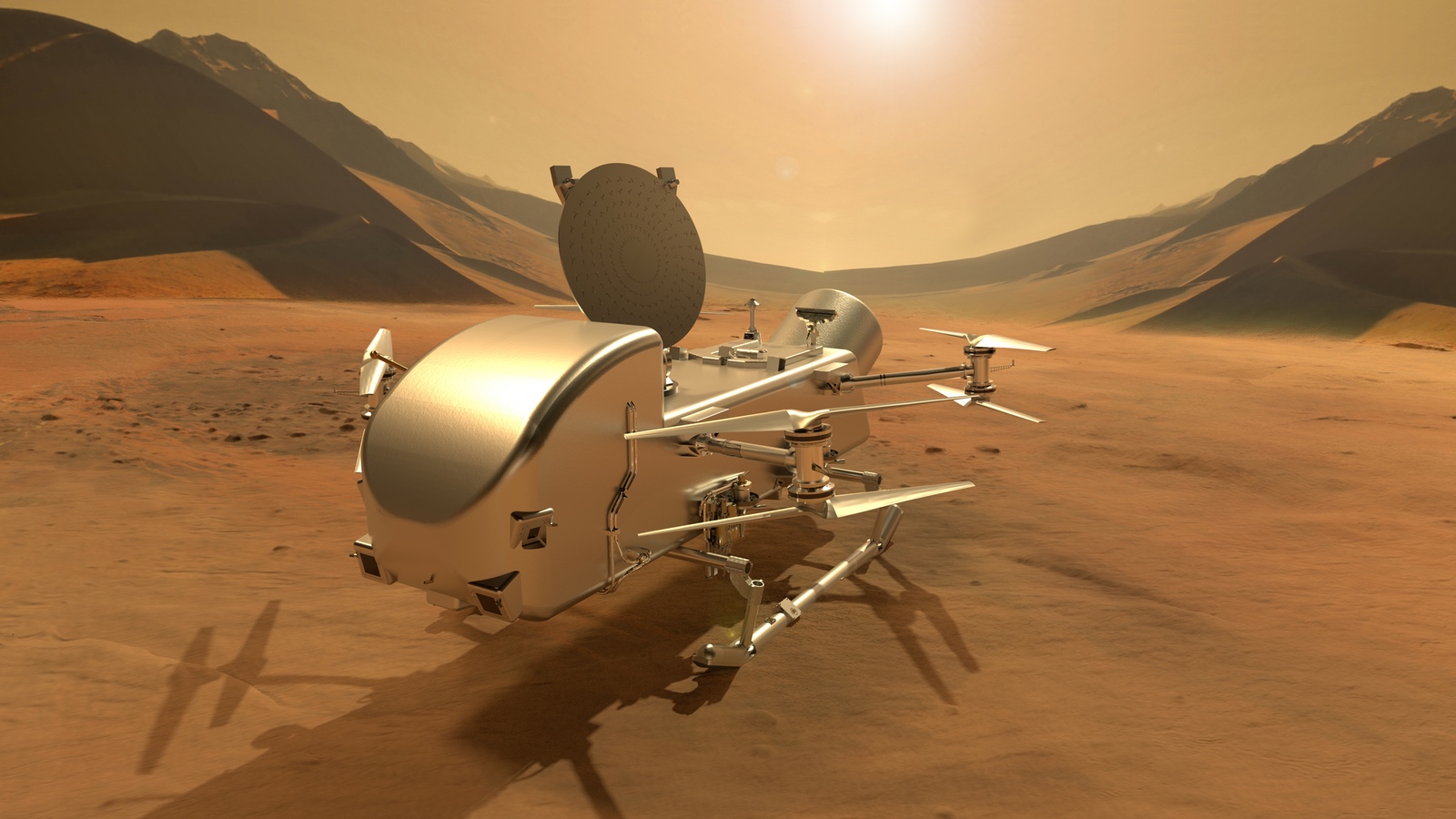LAUREL, Md. — A proposed cut of nearly 20% in the budget for NASA’s Dragonfly mission to Saturn’s moon Titan in 2024 could force changes to the mission or its schedule, a top project official said May 3.
NASA’s fiscal year 2024 budget proposal requested $327.7 million for Dragonfly, a rotorcraft that would land on Titan and then fly through the moon’s dense atmosphere, going to various locations to study the building blocks of life. Dragonfly is scheduled for launch in 2027, landing on Titan in 2034.
The budget proposal reflects an 18.1% reduction from the $400.1 million Dragonfly received in fiscal year 2023. NASA’s budget document says only the agency “updated the budget profile to reflect updated estimates for a launch readiness date of June 2027.”
Speaking at a meeting of the Outer Planets Assessment Group (OPAG) here May 3, Zibi Turtle, principal investigator for Dragonfly at the Applied Physics Lab, said the fiscal year 2024 proposal affects plans for the mission. “The NASA budget request for FY24 would fund Dragonfly at a level that is below what we estimate is necessary over our profile,” she said.
She did not specify how much of a difference there is between the request and the mission’s profile, but said the project is looking at options on how to address that shortfall. “We are still in that process of evaluating cost and schedule options moving forward.”
Dragonfly completed its preliminary design review in early March, which Turtle said went well. The mission is preparing for a confirmation review, where NASA will set a formal cost estimate and launch date for the project, in the early fall, and she noted that evaluation of cost and schedule options would be part of planning for the confirmation review.
The proposed cut has gotten the attention of members of Congress. In back-to-back hearings in April, Sen. Chris Van Hollen (D-Md.) and Rep. Dutch Ruppersberger (D-Md.) asked NASA Administrator Bill Nelson about the proposed cut. The Applied Physics Lab, which is leading Dragonfly, is based in Maryland.
“Everything I know from the experts is that it doesn’t compute. You can’t cut by 20% and still remain on target,” Van Hollen said in a Senate appropriations hearing April 18.
Nelson said in both hearings that the cut would not delay Dragonfly’s 2027 launch. “We are still planning on launching Dragonfly in ’27. That has not changed,” Nelson told Ruppersberger at a House appropriations hearing April 19. “Right now, there is not any plan for a cut in fiscal year ’24.”
Earlier at the OPAG meeting, other NASA officials attempted to explain the reduced funding for the mission as part of the variability of the overall appropriations process. “It’s kind of a moving target,” said Henry Throop, a program scientist in NASA’s planetary science division, May 2. “This is enough for continued development of the mission.”
“The budget process doesn’t provide certainty,” said Curt Niebur, lead scientist for flight programs in NASA’s planetary science division, but he emphasized that NASA supported the mission.
“Dragonfly has had a rough road programmatically,” he said, a reference to issues such as a one-year delay in the launch NASA announced in 2020 to cover costs outside the mission itself, such as the effect of the pandemic on other planetary missions. “There’s a commitment to traveling that rough road at all levels, from the project on up.”
Dealing with operations costs
The pandemic has been one key factor in rising costs of planetary missions in general. Another, Niebur said at the OPAG meeting May 2, was growing costs of operating missions once they are launched.
He said that planetary missions are overrunning their estimated costs for operations, known as Phase E in NASA programmatic parlance, by an average of 52% over their original proposals. “We have a big Phase E problem.”
Missions have argued that they can’t provide updated estimates for operations costs until a review called Key Decision Point E, within a few months of launch. He suggested that puts NASA in a bind, since by that time the spacecraft is completed and ready for launch. “What do you think the chances are that we say no to that, when we’re two months from launch?” he said. “That is devastating our ability to plan ahead.”
The problems with increased operations costs across the board, Niebur said. “Every planetary mission has a Phase E upper,” or increase, he said. NASA’s Science Mission Directorate is starting study to look at cost growth in operations of planetary and other missions.
He placed much of the blame for the operations cost increases on those proposing missions, for failing to look at performance of earlier missions as well as rejecting proposals to place a cap on Phase E costs on future missions. “We seem unable, unwilling, reluctant to look back at past performance and use that to guide our missions for the future,” he said. “That ends now.”
